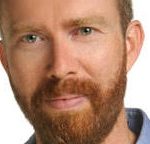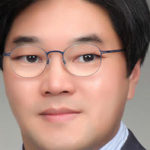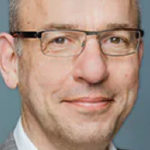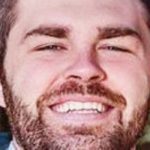
- Home
- Conference Info
- Register Now
- Sponsoring
- About ICMC
- Contact Us
- Purchase Video Archive
- Speaking
- Promotion Materials
- Justify Your Attendance
- Student Volunteer Program
- Code of Conduct
- Registration Terms and Conditions
- ICMC 2025 Archive
- ICMC 2024 Archive
- ICMC 23 Archive >
- ICMC22 Archive>
- ICMC21 Archive >
- ICMC20 Archive >
- ICMC19 Archive >
- ICMC18 Archive >
- ICMC17 Archive >
- ICMC16 Archive >
- ICMC15 Archive >
- ICMC14 Archive >
- ICMC13 Photos
|
Presentations by Topic
Jump to: Certification Programs | Common Criteria | Embedded Cryptography and IoT | Entropy | NIST
Day 1
15 May 2019
10:30
Parq Grand Ballroom E
Latest Cryptographic Module Test Technology Development Trends of KCMVP (C11a)
This presentation will introduce the major test technology development trends of KCMVP. Korea has been operating its own cryptographic module validation system since 2005 and has been conducting tests based... Read More
Update on the Canadian Centre for Cyber Security (C11b)
This presentation will introduce the new Canadian Centre for Cyber Security (CCCS or Cyber Centre), a branch of the Communication Security Establishment (CSE). We’ll focus on who we are in... Read More
CMVP Programmatic Update (C11d)
This presentation will provide the latest from the CMVP: from new and updated Implementation Guidance to lab accreditation changes, and all initiatives in between.
With ACVP done what’s next on the road to automating the NIST crypto validation programs? (C13b)
NIST is working in close collaboration with the industry to address the shortcomings of the NIST Cryptographic Validation Programs and improve the efficiency and effectiveness of cryptographic module testing in... Read More
Day 2
16 May 2019
PSA Certification Programme (C21b)
This presentation will give a very brief introduction to Arm Platform Security Architecture (though that is a separate submission) and then explains why Arm have decided to introduce a new... Read More
FIDO Authenticator Certification – FIPS 140-2 Companion Program (C21c)
The FIDO Alliance, a 250+ member association developing specifications and certification programs for simpler, stronger authentication, announced back in March 2018 the expansion of its certification program to include multi-level... Read More
Secure Components – Certification That Benefits Edge, Fog & Cloud (C21d)
We are becoming increasingly ‘digitally dependent’, with connectivity spanning from our Edge devices, through the Fog and into the Cloud, helping us to manage every aspect of our personal, business... Read More
Securing a Connected World – How to create a certification Landscape (C22a)
This presentation will discuss the following problems: * Not all certification levels fit * How do you include HW/SW/Edge/Cloud? * Patching security issues * How do you re-use from 1... Read More
Composite Evaluation Approach Derived from Decades of Experience in Smart Card Evaluations for HSM and SAM (C22c)
Mandated in 2018, eIDAS (electronic IDentification, Authentication and trust Services) is an EU regulation defining standards for electronic signatures, qualified digital certificates, electronic seals, timestamps and other proof of authentication... Read More
A new european regulation landscape for secure signature devices (C23a)
No one doubts that the handwritten signature will eventually be replaced by the digital signature. The European union is evolving towards new regulations for these systems based on certification. New... Read More
eIDAS: Will Common Criteria Replace FIPS 140-2? (C23b)
Over the past few years, assessment of compliance of products and services with the eIDAS regulation has been at the center of extensive debate. Product developers, service providers, certification authorities,... Read More
Day 3
17 May 2019
Dealing with Overlapping Certification Requirements and Maximizing Your FIPS Investment (C31a)
This presentation will provide an overview of testing deemed necessary in FIPS and a summary of the challenges and opportunities for re-use in other Certifications based on lessons learned from... Read More
ISO/IEC 19790 Updates (C31b)
ISO/IEC 19790 provides the security requirements for a cryptographic module. Originally based on the U.S. FIPS 140-2, the ISO version has been further developed and improved in subsequent editions. The... Read More
FIPS and CC : Symbiotic Certifications (C32b)
Description TBA
Day 4
21 Sep 2020
15:30-16:00
CC in the Cloud (C13a)
The Common Criteria has been a framework for product evaluation of security functions since its inception in the late 1990s. As DevOps became the trend for development of agile cloud... Read More
Panel Discussion on Cryptography and HSMs in the Cloud (C13b)
Description to come
Day 5
19 Jun 2025
9:00-9:30
FIPS 140-3 Overview: Introduction (C30a)
FIPS 140-3 is structured very differently than the previous standard. This talk focuses on the ISO and NIST requirement documents and how they influence the CMVP program.
Day 6
23 Sep 2020
9:30-10:00
FIPS 140-3 Overview: SP 800-140 Overview (C30b)
This presentation walks through the standards necessary to understand how the US-Canada validation authority manages the ISO requirements and testing while meeting CMVP requirements.
10:00-10:30
FIPS 140-3 Overview: FIPS 140-2 Timeline and 140-2 and 3 Transitions (C30c)
As CMVP stands up FIPS 140-3, this presentation addresses the roadmap and management of FIPS 140-2 and what this means to vendors, labs, and users. This is an overview of... Read More
11:00-11:20
FIPS 140-3 Overview: Non-Invasive (C31a)
Indirect physical attacks such as sustained power monitoring have demonstrated that it is possible for some equipment to reveal sensitive key information. This presentation will provide an overview as to... Read More
11:20-11:40
FIPS 140-3 Overview: Authentication (C31b)
This talk walks through the standards necessary to understand how the US-Canada validation authority manages the ISO requirements and testing while meeting CMVP requirements.
11:40-12:00
FIPS 140-3 Overview: 90-B Validations (C31c)
This presentation discusses how these validations will be integrated into the CAVP program and automation.
12:10-12:30
FIPS 140-3 Overview: CAVP Overview (C31d)
CAVP has reformulated the algorithm process over the last year. This presentation will address how the process now works, who can use the service, and how the information is used.c
13:00-13:30
Getting Ready for FIPS 140-3 (C32a)
On behalf of the Cryptographic Module User’s Forum (CMUF) FIPS 140-3 Transition Working Group (WG), the speaker will report the work performed by the WG to assist the Cryptographic Module... Read More
13:00-13:30
Supporting TLSv1.3 in NDcPP (S32a)
TLS is one of the widely used protocols for secure communication channels between connected devices. Security has improved for TLSv1.3 compared to previous versions of TLS. Therefore, the Network iTC... Read More
13:30-14:00
101 on FIPS 140-3 (C32b)
This presentation will explain the key differences between FIPS 140-2 and 140-3 requirements for the most used levels (1 and 2) of software, hardware and hybrid modules. A summary mapping... Read More
14:00-14:30
14:30-15:00
CMVP Programmatic Update (C32d)
This presentation will provide the latest from the CMVP: from new and updated Implementation Guidance to lab accreditation changes, and all initiatives in between.
15:30-16:00
NIAP Update—Crypto Policy Insights (C33a)
Description to come
16:00-16:30
Extending NIST’s CAVP Testing: Lessons Learned from CVE-2019-8741 (C33b)
The security of cryptography in practice relies not only on the resistance of the algorithms against cryptanalytical attacks, but also on the correctness of their implementations. NIST maintains the CAVP,... Read More
Day 7
19 Jun 2025
9:00-9:30
Track Keynote: Transition to ISO/IEC 19790:2012 in JCMVP (C40a)
IPA/JCMVP is the validation authority of cryptographic module validation in Japan. IPA/JCMVP has started two-year transition period of cryptographic module security requirements to ISO/IEC 19790:2012 and ISO/IEC 24759:2017, from July... Read More
Day 8
24 Sep 2020
CMUF CPU Equivalency Working Group Panel Report and Discussion (C40b)
Over the last several years, both the CMVP and NIAP have been reducing the number of similar CPUs covered by a single CAVS test. Historically, an ARM was an ARM,... Read More
11:30-12:00
From Turtle to Cheetah: Fast and Effective Common Criteria Evaluations (C41b)
Highly regulated industries and critical infrastructure environments demand fulfillment of security requirements through rigorous and standardized approaches. In this context, the value of Common Criteria certifications is internationally recognized, but... Read More
11:30-12:00
SESIP: Building an Optimised Methodology On and For IoT times
To address the requirements of the market for IoT product evaluations, the standard SESIP (Security Evaluation Standard for IoT Platforms) was designed in and for the IoT time scales. This light-weight... Read More
12:00-12:30
How to Design (and Operate) Efficient Schemes (C41c)
There is a great need for security and assurance in the fast growing connected world. To address this need, very many dedicated security evaluation schemes are popping up, often with... Read More
13:00-13:30
Third Country Perspective to the EU CSA—What Will Be the Next Step? Confusion or Order? (C42a)
The EU has established a new Cyber Security Law. The objectives are to standardize and protect the market, eliminating the duplicate efforts and different policies among members. Although the law... Read More
13:30-14:00
Transitioning to SP800-56A Rev3 (C42b)
Recently, FIPS 140-2 Implementation Guidance (IG) D.8 and D.1-rev3 have been updated to state the requirements for vendor affirmation to NIST Special Publication (SP) 800-56A Rev3 and the transition from... Read More
14:00-14:30
A Multi-Step Transition to New Algorithms: Key Establishment, Entropy and More (C42c)
Several NIST key establishment standards have been recently updated: SP 800-56A, 56B and 56C. As these standards represent a significant shift in the key agreement and key transport paradigms, it... Read More
14:30-15:00
FedRAMP—Introduction and Update (C42d)
Cloud has become an inevitable infrastructure for government agencies world wide. So, securing workloads in the cloud has become a high priority task. FedRAMP is an established US government Risk... Read More
15:30-16:00
NIST and NIAP: A Tale of Two Crypto Validations (C43a)
In this talk, we will analyze in depth the need for harmonization between NIAP and CAVP (FIPS) requirements. We will review changes to the recent NIAP Policy 5 Guidance update... Read More
16:00-16:30
Educating the Next Generation of FIPS 140 Certification Specialists (C43b)
If you read the news these days relating to cyber security, it is virtually impossible to miss the large number of articles which focus on the ever-increasing labor shortage in... Read More
16:30-17:00
The Basics of ACVP Communication and Interaction (C43c)
ACVP is becoming the only accepted method by which cryptographic algorithms are validated and certified with NIST. As the CAVS tool’s time comes to an end, so to do some... Read More
17:00-17:30
FIPS 140-3 is here, great! But…what happens to my 140-2 certs? (C43d)
The much-awaited FIPS 140-3 is here but the elephant in the room is “what happens to all the 140-2 module and algorithm certificates?” This presentation will look at the various... Read More
Day 9
14 Sep 2022
11:15
Cryptography Validation Programs Status (C11a)
The current state of CMVP, CAVP, and Entropy Validations
CMVP Programmatic Update (C11b)
The current state of the Cryptographic Module Validation Program (CMVP) operations will be presented.
12:15
CAVP Programmatic Update (C11c)
The current state of the Cryptographic Algorithm Validation Program (CAVP) operations will be presented.
CMVP Automation (C12a)
The current state of the NIST automation and processing of CMVP and CAVP validations.
CMVP IGs and SP 800-140x updates (C12b)
New and upcoming Implementation Guidance (IGs) & SP 800-140x since the last ICMC meeting.
NIST Handbook 150-17 Updates (C12c)
The current state of the Handbook 150-17 and the CMVP and CAVP scopes.
NIST and NIAP Working Together (C13a)
Update on co-operative activities between NIST and NIAP with respect to cryptography and cryptographic modules.
Panel Discussion: Maintaining Validation for Module Updates (C13b)
This expert panel will discuss issues around re-test requirements for module updates, including: Updates for discovered module vulnerability; Handling non-module updates in FIPS; Vendors labs NIST, how are we going... Read More
Day 10
15 Sep 2022
09:00
Out of Bounds—A Look into FIPS 140-3 Boundary Definitions and Requirements (C20a)
Labs often encounter questions from Vendors dealing with defining a prospective module’s cryptographic boundary properly. In the past, simply defining a firmware module as software that is contained within a... Read More
360° View of FIPS 140-3 Certification (C20b)
Since accepting FIPS 140-3 reports on 22 September 2020, the atsec CST lab has submitted almost a dozen reports to the CMVP. Some of them are currently in the coordination... Read More
10:00
140-3 for a 140-2 Module; Some Gotchas (C20c)
This talk is primarily for vendors with existing FIPS 140-2 modules highlighting some of the subtler changes between the standards that could still force a change in module design before... Read More
11:00
11:30
Single-Chip and Bound/Embedded Working Group Updates (C21b)
Both the Single-Chip and Bound/Embedded Working Groups within the CMUF are on their second year of existence. This talk will focus on what each group has accomplished in the last... Read More
12:00
ISO/IEC 19790—Where to Next? (C21a)
As the ongoing update of ISO/IEC 19790 moves to the committee draft stage, this talk will look to review trends for cryptographic modules and review what opportunities exist to evolve... Read More
13:30
Protocol-Related Rules Enforcement in FIPS Validations (C22a)
Recently NIST started to enforce that auxiliary requirements of various algorithm specifications must be present and enforced by a FIPS module. Such requirements cover aspects such as how keys used... Read More
14:00
SPDM Design with FIPS 140-3 Compliance (C22b)
The Security Protocol and Data Model (SPDM) is a protocol published by Distributed Management Task Force (DMTF). Since its debut in 2019, SPDM has been employed by several standard bodies,... Read More
14:30
Setting Up an Internal CAVP ACVTS Lab (C22c)
Vendors who design a cryptographic module know that all its FIPS-approved cryptographic algorithms must be CAVP certified. Normally, this certification process requires the use of an external 3rd Party CST... Read More
15:30
Simplification of Multiple International Standards for Cryptographic Modules (C23a
Cryptographic Module vendors operate in a vast and varied international marketspace. ICMC is International in name, in attendance, and in its reach of audiences. However, the FIPS 140 standard, which... Read More
Cryptography Standards: Bridging the Gap Between EU and US Markets (C23b)
US and Europe are defining independent cryptography standards and evaluation methodologies, which could result in misalignment with regional certification schemes. This talk will explain: • Cybersecurity challenges of misalignment between... Read More
16:30
PSA Arm Architecture for Independent Certification (C23c)
PSA Certified is three years old and now has over 100 certified products. It has grown from four to six test labs and forged alliances with other organizations such as... Read More
Day 11
16 Sep 2022
09:00
A Call to CMVP for a New Type of FIPS 140 Certificate (C30a)
Very few vendors implement cryptography. At the heart of most certified modules is third party and open source cryptography. CMVP already allows vendors to use the “FIPS logo” if they... Read More
Day 12
20 Sep 2023
CMVP Programmatic Update (C11a)
The current state of the Cryptographic Module Validation Program (CMVP) operations will be presented.
CMVP and CAVP Automation (C11c)
The current state of the NIST automation and processing of CMVP and CAVP validations will be presented.
13:35
EFP/EFT Testing at Security Level 3 and 4 and Remote Testing Advocacy (C12a)
With the publication of FIPS 140-3, EFP/EFT testing was added as a FIPS 140-3 requirement at security level 3 security level. FIPS 140-2 was required at security level 4 but... Read More
14:05
ISO 19790:2024 and 24579:2024 – How is Progress and What Has Changed? (C12b)
This presentation will be delivered by a member of the ISO editing team for both ISO/IEC 19790 and ISO/IEC 24759 will provide a status update on the ongoing updates to... Read More
14:35
Adoption of the Next Version of 19790 by the CMVP (C12c)
This talk will discuss the expected transition from 19790:2012 to 19790:202x. It will present the major anticipated work items, a possible transition timeline, as well as any foreseen challenges. As... Read More
Panel: Facing the Future: The Next ISO/IEC 19790 (C13a)
The version of ISO/IEC 19790 (hereafter 19790) adopted as FIPS 140-3 was published in 2012. Since its publication, it has gone through four working drafts (WDs) and one committee draft... Read More
16:35
Staying Active (and not Historical). FIPS Programmatic Algorithm Transitions by EOY and Early 2024 (C13c)
Triple-DES, Non SP 800-56B Rev. 2 RSA key establishment, RSA with PKCS v1.5 padding, FIPS 186-5 (X9.31) are among algorithms transitioning to Historical by the end of year or early... Read More
Day 13
21 Sep 2023
09:00
NIAP Update (C20a)
Update on NIAP scheme, initiatives, and PP development goals (CC:2022, SBOM, Cloud, Automation)
09:30
NIAP Entropy Analysis Report Guidance Update (C20b)
Update on NIAP guidance for Entropy documentation required in relation to entropy reports completed by CMVP/NIST against SP800-90B
NIAP CNSA 2.0 Plans (C20c)
This talk will provide update on post quantum crypto requirements and required updates to Protection Profiles
Panel Discussion: CPU Equivalency (C21b)
An expert panel discussing CPU Equivalency
13:30
Security: The Second Wave of Convergence (C22a)
During the 1990’s the introduction of the internet, web browser, email and resulting electronic services led to an initial commercialization wave of crypto and security technologies. During this time security... Read More
Panel Discussion: Security vs Compliance Part 2 (C22b)
This panel will continue the discussion from last year’s panel on the same topic, security vs compliance–is it possible to achieve both? What should our goals be? How can we... Read More
15:30
Introduction of Quantum Safe Equipment Certification Program in Korea (C23a)
Korea has introduced new certification program for Quantum Key Distribution System in November of the last year and started the official process in April. As an organization applying for the... Read More
Panel Discussion: Towards Certification of Quantum Technologies (C23b)
A hot topic in the community is the importance of crypto-agility, and how diversifying one’s security base can strengthen resilience. Whilst validation programmes like CMVP are considering PQC, movement towards... Read More
Day 14
22 Sep 2023
Satisfying Seemingly Divergent Requirements—Taking Common Criteria into Consideration When Architecting Products for FIPS 140 Certifiability, What the FIPS Certification Specialist Needs to Know (C30a)
In the alphabet soup that is the landscape of product security certifications today, it is well understood that FIPS is the foundational certificate. Often that means that it gets the... Read More
Panel: Bringing Crypto Compliance and Validation Testing Objectives Together for FIPS 140-3 (C30b)
The Cryptographic Module Validation Program (CMVP) was established on July 17, 1995, by the National Institute of Standards and Technology (NIST) to validate cryptographic modules conforming to the Federal Information... Read More
10:45
FIPS Physical Testing: A Ridiculous(ly) Informative Tutorial (C31a)
Come join Seamus, Brent, and a pair of disembodied hands for this informative and entertaining video presentation (with a live component) to learn the physical security requirements in FIPS 140-3... Read More
Panel: Looking beyond 1SUBs (C31b)
Companies with large portfolio of products like VMware benefit enormously from the rebranding and 1SUB processes allowed by NIST for OSS cryptographic libraries. However, as businesses move increasingly towards the... Read More
13:30
Software Modules: Is it time to update tested configurations? (C32a)
This talk will present cryptographically significant effects stemming from compiler version differences in software module(s) since mid-2022. The speaker will present this research to the ICMC community along with a... Read More
Panel/Open Floor: Ideas and Issues for Speeding Up the CMVP Queue (C32b)
Initial presentations on ideas for speeding up the CMVP queue and processing times followed by an open floor brain storming session to bring in thoughts and ideas from the audience... Read More
Day 15
18 Sep 2024
13:30
Navigating Vendor and Lab Relationships: Best Practices and Lessons Learned from FIPS 140-3 (C12a)
This talk will provide insights into the evaluation process of FIPS 140-3, from initial engagement to successful submission of the certificate. It will cover aspects such as performing gap analysis... Read More
Entropy Reviewer Panel (C12b)
This talk will feature a panel discussion with entropy reviewers to reflect on observations from entropy reports over the past year, changes in guidance, and address audience questions.
15:30
Cryptographic Evaluation in Europe Is Now a Reality: The Spanish Case (C13a)
In recent years, Europe has made significant strides in the cryptographic field, emerging as a global powerhouse. The widespread adoption of cryptographic primitives to safeguard sensitive information across hardware, software,... Read More
Panel: The Upcoming ISO/IEC 19790:2024 (C13b)
The version of ISO/IEC 19790 adopted as FIPS 140-3 was published in 2012. Since then, it has undergone several revisions. The panel, consisting of experts, will discuss major updates to... Read More
Day 16
19 Sep 2024
13:30
FIPS Everywhere – Can We Do It? (C22a)
In a world where FIPS has been viewed as a drain on cryptographic performance and quality, what will it take to make FIPS something that can be used everywhere? This... Read More
If I Led the CMVP: Thoughts for the CMVP from Labs and Vendors (C22b)
The CMVP will host a discussion on important topics within the CMVP community. Following a brief presentation from the CMVP’s perspective, panelists will share their insights on trust in labs... Read More
Dedicated Security Component – A FIPS Module in the CC World (C23a)
Cryptography underpinning data confidentiality and integrity is evident not only in the high demand for cryptographic module validation but also in the Dedicated Security Component collaborative Protection Profile (DSC cPP).... Read More
16:00
A Funny Thing Happened on the Way to the Test Lab (C23b)
A FIPS tester finds himself mixed up in a series of peculiar, absurd, but eerily familiar scenarios on the way to the Test Lab. A Scheme Reviewer dreams of consistently... Read More
Day 17
20 Sep 2024
09:00
Making Sense of the FIPS 140 Validation Review Queue (C30a)
Vendors are required to submit their cryptographic module implementations to the Cryptographic Module Validation Program (CMVP) for validation and qualification of their products or cloud services for deployment within the... Read More
Panel: NCCoE Automation of Module Validation Project (AMVP) (C30b)
Abstract to come.
10:45
Side-Channel Vulnerabilities, a Closer Look at NIST Standardization (C31a)
The algorithms CRYSTAL-Cyber, CRYSTAL-Dilithium, SPHINCS+, and FALCON form the basis of FIPS202, FIPS203, and FIPS204. Selected by NIST after rigorous testing for various resources, these algorithms emerged as optimal choices.... Read More
Hardware Equivalency for Single-Chip Modules (C31b)
Section 7.10 of the FIPS 140-3 Management Manual outlines operational equivalency for hardware modules, enabling labs to conduct minimal regression testing across multiple platforms differing in storage, interfaces, and power... Read More
11:45
Physical Security of Single Chips (C31c)
Thirty years after the publication of FIPS 140-1, technology has evolved, but the standard has not kept pace. This talk will review the physical security requirements of single-chip embodiments, addressing... Read More
13:30
Module Component Pre-Validation Packages: Enhancing Reusability for Scalable Certifications (C32a)
This talk will explore the concept of ‘Module Component Pre-Validation Packages’ as a means to facilitate compliance, streamline testing processes, and promote reusability within the realm of ISO/IEC 19790 and... Read More
14:00
Decoupling Applets from Smart Card/Java Card Validations (C32b)
The talk aims to discuss the current validation process for Applets executing on JAVA cards and explore the potential for decoupling the FIPS validation of an applet from the underlying... Read More
Day 1
15 May 2019
A Protocol Protocol (G13b)
Representation of protocols such as TLS, SSH and IPsec vary widely in the Security Policies for modules validated to FIPS 140-2. This presentation covers associated guidance, representation of ciphersuites (and... Read More
Day 2
16 May 2019
FedRAMP Introduction (G21a)
Cloud is becoming a dominant tool for various government agencies. Hence securing the cloud has become a paramount task. FedRamp is US standard for clouds. In spite of FedRamp enforcement,... Read More
PSA Certification Programme (C21b)
This presentation will give a very brief introduction to Arm Platform Security Architecture (though that is a separate submission) and then explains why Arm have decided to introduce a new... Read More
Composite Evaluation Approach Derived from Decades of Experience in Smart Card Evaluations for HSM and SAM (C22c)
Mandated in 2018, eIDAS (electronic IDentification, Authentication and trust Services) is an EU regulation defining standards for electronic signatures, qualified digital certificates, electronic seals, timestamps and other proof of authentication... Read More
eIDAS: Will Common Criteria Replace FIPS 140-2? (C23b)
Over the past few years, assessment of compliance of products and services with the eIDAS regulation has been at the center of extensive debate. Product developers, service providers, certification authorities,... Read More
Day 3
17 May 2019
Dealing with Overlapping Certification Requirements and Maximizing Your FIPS Investment (C31a)
This presentation will provide an overview of testing deemed necessary in FIPS and a summary of the challenges and opportunities for re-use in other Certifications based on lessons learned from... Read More
Evaluating Cryptography in a Common Criteria context (K32a)
Cryptography is almost in all IT products providing security. As such, the evaluation of the cryptographic code is part of a Common Criteria evaluation. On the other side, in a... Read More
Day 1
15 May 2019
Emerging Cryptography Trends in the Internet of Things (E11b)
With the explosive growth of Internet of Things coupled with 5G communications and re-utilization of GSM 200kHz band for localized IoT applications, industry is going forward with massive investments in... Read More
Building trust takes time. Or just cryptography and secure execution? (E11c)
Driven by digitalisation of “everything”the trust in digital devices of all types and their authenticity and integrity becomes a critical factor for the success of new offerings and business models.... Read More
Encryption Standardization for NVDIMM-N class PMEM devices (E11d)
A non-volatile DIMM (NVDIMM) is a Dual In-line Memory Module (DIMM) that maintains the contents of Synchronous Dynamic Random Access Memory (SDRAM) during power loss. An NVDIMM-N class of device... Read More
IoT and the NISTIR 8200: A Step Towards Standardization (E12a)
The NISTIR 8200 report addresses the growing need to develop effective security standards for the Internet of Things (IoT). They have identified a wide range of critical categories impacted by... Read More
FIPS Validation and Mission-Critical IoT Ecosystems (E13a)
Internet of Things (IoT) ecosystems have become increasingly prevalent, fundamentally changing the way we live, work and play. Billions of IoT devices already exist, with hundreds more coming online each... Read More
HSM requirements for V2X connected cars communications (E13b)
The automotive industry has rapidly evolved in recent times in such a way that the cars have been transformed from a simple mode of transport to the ultimate mobile device.... Read More
Securing the Smart City: Architectural Considerations for CA and Remote Key Distribution (E13c)
The importance of connected devices, services, and platforms in modern society is growing rapidly, and nowhere is this more apparent than the smart city. Made up of a wide range... Read More
Day 2
16 May 2019
IoT TLS: Why It Is Hard (S21b)
TLS (formerly SSL) is fairly well known, and most people are familiar with it through the ‘s’ at the end of the ‘https’ in web URLs. Securing communication is also... Read More
Day 3
22 Sep 2023
13:30
Ascon – The New NIST Standard for Lightweight Authenticated Encryption and Hashing (E32a)
Driven by the demand for cryptographic protection in resource-constrained devices, NIST has initiated a lightweight cryptography competition between 2019 and 2023. Among 57 submissions, Ascon has been selected as the... Read More
Panel: Trends and Issues in IoT Cryptography (E32b)
Trends and Issues in IoT Cryptography
Day 1
15 May 2019
Entropy as a Service – A scheme, implementation, experience (G11c)
Cryptography is facing new challenges with new technologies such as IoT, Cloud, Quantum Cryptography etc. As the number of secure connections are exponentially increasing, key generation, strength of keys are... Read More
Random Numbers, Entropy Sources and You (N12a)
The NIST Special Publication (SP) 800-90 series of recommendations provide guidance on the construction and validation of random bit generators in the form of deterministic random bit generators or non-deterministic... Read More
Evaluation and Validation of Random Bit Generators (N12b)
Description to come:
Day 2
17 May 2019
The IID Assumption and You! (N31a)
In an SP800-90B assessment, the vendor must determine if their noise source supports an IID assumption, and justify any claim that the source output is IID. The SP800-90B IID assessment... Read More
A Framework for Side-Channel Resistant Hardware/Software Codesign Using Quantum Crypto-Module (QCM) Supported by Quantum Entropy Chip (QEC) (N31c)
With the advent of the Internet of Things (IoTs), all kinds of modern electrical devices such as smart phones, medical devices, network sensors as well as traditional computing platforms are... Read More
Day 3
20 Sep 2023
Multi-Certifiability of Cryptographic Modules: How to Make a TRNG Multi-Certifiable? (N11a)
Correct and secure implementation of crypto modules is crucial for the overall system security which is, however, an error-prone and non-trivial task. A reliable and practical solution is to design... Read More
11:35
Assessing Random Bit Generator Quality with Granger Causality Extensions (N11b)
Numerous tests, including NIST STS and DIEHARDER test suites, have been formulated to assess RBG quality. However, these and others examine only the correlative properties present in a RBG stream.... Read More
12:05
Customer-Provided Entropy Provision for Virtual Machines in Hypervisor Environments (N11c)
Virtualized environments rely on high-quality entropy for generating cryptographic keys and securing sensitive data. In many cases, the entropy sources within the VM or sourced from hypervisor may be of... Read More
13:35
Update on AIS 20/31 (N12a)
The BSI evaluation guidelines for random number generators, AIS 20 and AIS 31, have been effective in the German Common Criteria certification scheme for over 20 years, last updated in... Read More
14:05
Update on SP 800-90 (N12b)
Abstract: This presentation will provide updates on the ongoing development of the SP 800-90 series. In 2022, NIST published a draft of SP 800-90C, Recommendation for Random Bit Generator (RBG)... Read More
Bridging the Gap Between the SP 800-90 Series and AIS 20/31 (N12c)
NIST and BSI have been in an ongoing process of harmonizing the SP 800-90 Series with AIS 20/31. Although the requirements are not identical, there are several pairs of random... Read More
Tailored Health Tests for Physical Entropy Sources (N13a)
Health tests are an integral part of entropy sources. These tests are critical for ensuring security, because noise sources can be sensitive to process variation in manufacturing, component aging or... Read More
16:05
Entropy Reviewers Open Floor (N13b)
Panel and Open Floor Questions with NIST Entropy Submission Reviewers
Day 4
19 Sep 2024
09:00
Practical Guide to Entropy (N20a)
Entropy plays a crucial role in FIPS validation, yet remains poorly understood. As the founder and leader of the CMUF Entropy Working Group since 2018, the speaker possesses valuable insights... Read More
09:30
A Practical Guide to Entropy Noise Sources (N20b)
This talk covers both physical and non-physical noise sources utilized for entropy generation. It provides examples of various noise sources, including those based on ring oscillators, metastable latches, CPU jitter,... Read More
Post-Processing Algorithms and Conditioning Functions for Entropy Sources (N20c)
Post-processing algorithms and conditioning functions are integral components of entropy sources and random number generators. They are applied to the raw output of the noise source to enhance the entropy... Read More
XDRBG – A New Lean DRBG (N21a)
The well-established DRBGs specified by SP800-90A are prevalent, primarily due to their compliance with FIPS 140-3 requirements and reliance on long-standing cryptographic primitives. However, recent years have seen the emergence... Read More
Panel: Standardization of Random Number Generators–Perspective from BSI and NIST (N21b)
BSI and NIST have jointly developed standards and guidelines for generating random numbers suitable for cryptographic applications. The BSI evaluation guidelines AIS 20 and AIS 31, along with NIST’s Special... Read More
DRNG Trees and RBGC Constructions (N22a)
Software implementations of random number generators (RNGs) may lack direct access to an entropy source and rely on other software or system components to seed and reseed their deterministic random... Read More
14:00
Developing a Stochastic Model for a Ring Oscillator and Determination of Correlation Between Ring Oscillators (N22b)
This talk will cover the development of a stochastic model tailored for estimating min-entropy in ring oscillators, essential components in designing secure cryptographic systems. The aim is to bridge the... Read More
15:30
The SP800-90B Approved Health Tests and Their Cutoffs (N23a)
The SP 800-90B approved health tests detect a particular class of failures, with cutoffs set under implicit assumptions. This talk reviews relevant SP 800-90B requirements, explores failure modes detected by... Read More
16:00
Health Testing with Sample Variance (N23b)
Due to the nature of the SP 800-90B requirements, entropy sources often implement only the minimum required testing, namely the adaptive proportion test (APT) and repetition count test (RCT). This... Read More
16:30
Trends of the ESV Submissions to Date (N23c)
There have been at least 130 entropy source certificates awarded by the ESVP so far. In this talk, the speaker will summarize lab, implementation, and vendor trends based on information... Read More
Day 1
14 May 2019
FIPS 140-2 Validation Process: Overview and Case Study (W00b)
An in-depth look at the real-world process of validation with input from professionals who have hands-on experience at each step. Includes a case study of an actual validated CM product.
Workshop on Automated Cryptographic Validation Protocol (ACVP) (W01b)
NIST is working in close collaboration with the industry to address the shortcomings of the NIST Cryptographic Validation Programs and improve the efficiency and effectiveness of cryptographic module testing in... Read More
Day 2
15 May 2019
Second Round Candidates in NIST PQC Standardization (Q11b)
After about one-year analysis and evaluation on the first-round candidates, NIST announced the second-round candidates in January 2019. In this presentation, we will provide a summary on the second-round candidates... Read More
Entropy as a Service – A scheme, implementation, experience (G11c)
Cryptography is facing new challenges with new technologies such as IoT, Cloud, Quantum Cryptography etc. As the number of secure connections are exponentially increasing, key generation, strength of keys are... Read More
CMVP Programmatic Update (C11d)
This presentation will provide the latest from the CMVP: from new and updated Implementation Guidance to lab accreditation changes, and all initiatives in between.
Random Numbers, Entropy Sources and You (N12a)
The NIST Special Publication (SP) 800-90 series of recommendations provide guidance on the construction and validation of random bit generators in the form of deterministic random bit generators or non-deterministic... Read More
Evaluation and Validation of Random Bit Generators (N12b)
Description to come:
With ACVP done what’s next on the road to automating the NIST crypto validation programs? (C13b)
NIST is working in close collaboration with the industry to address the shortcomings of the NIST Cryptographic Validation Programs and improve the efficiency and effectiveness of cryptographic module testing in... Read More
Day 3
16 May 2019
Validating the Implementations of the “New” and “Old” Key Establishment Standards (G22c)
The recent NIST publications of new versions of the key establishment standards formed a complicated landscape for the CMVP, the implementers, and testers. The standards keep evolving, the new parameter... Read More
Towards Standardization of Threshold cryptography at NIST (G23c)
The computer security Division at the National Institute of Standards and Technology is taking steps toward the standardization of threshold schemes for cryptographic primitives. These schemes have the potential to... Read More
Day 4
17 May 2019
ISO/IEC 19790 Updates (C31b)
ISO/IEC 19790 provides the security requirements for a cryptographic module. Originally based on the U.S. FIPS 140-2, the ISO version has been further developed and improved in subsequent editions. The... Read More
The new NIST reference for Randomness Beacons (A32c)
A randomness Beacon produces timed outputs of fresh public randomness. It pulsates randomness in an expected format at expected times, making it available to the public. Beacons offer the potential... Read More


























































































































